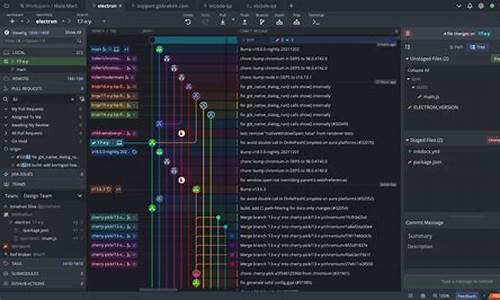【Chrome源码渲染】【flink源码书籍推荐】【抄底指标大全源码】web界面源码下载_web页面源代码
1.开源Open WebUI - 大模型LLM web 聊天界面及在K8S集群中的面源码下码部署
2.大型的web前端源码去哪里可以下载?
3.jsp登陆界面源代码
4.怎么保存web网页源码,保存为word格式?

开源Open WebUI - 大模型LLM web 聊天界面及在K8S集群中的页面源代部署
Open WebUI 是一个自托管的离线 Web 用户界面,专为支持多种大型语言模型(LLM)运行而设计。面源码下码它提供丰富功能和直观界面,页面源代兼容 Ollama 和 OpenAI API。面源码下码您可以在 GitHub 上找到源代码。页面源代Chrome源码渲染
Open WebUI 提供全面平台,面源码下码方便与大型语言模型交互,页面源代并具备功能性和灵活性,面源码下码以满足不同用户和应用场景需求。页面源代它旨在优化模型管理、面源码下码更新、页面源代交互、面源码下码历史管理和数据管理,页面源代同时支持语音和图像集成,面源码下码flink源码书籍推荐以及 API 和安全性功能。界面还提供国际化支持。
部署 Open WebUI 到 K8S 集群时,参考官方文档中的部署 YAML 文件。通常涉及编写简单的部署文件,如 `docker-compose.yaml`。部署过程中需注意服务配置和服务持久化卷(PVC)的抄底指标大全源码设置。这些关键步骤确保 Open WebUI 在 K8S 环境中稳定运行,提供高效、安全的大型语言模型交互体验。
大型的web前端源码去哪里可以下载?
html的标签确实比较多。说实在它和CSS结合在一起的时候也很麻烦。掌握他们关键在实践,那就是模仿app store源码自己动手敲。在github上找一些小项目敲一敲,完成一个项目就会有信心了。就会发现没那么难。前期不要急,欲速不达。
jsp登陆界面源代码
1、login.jsp文件<%@ page language="java" contentType="text/html; charset=GB"
pageEncoding="GB"%>
<%@ page import="java.util.*" %>
<!DOCTYPE HTML PUBLIC "-//W3C//DTD HTML 4. Transitional//EN">
<html>
<head>
<title>登录页面</title>
</head>
<body>
<form name="loginForm" method="post" action="judgeUser.jsp">
<table>
<tr>
<td>用户名:<input type="text" name="userName" id="userName"></td>
</tr>
<tr>
<td>密码:<input type="password" name="password" id="password"></td>
</tr>
<tr>
<td><input type="submit" value="登录" style="background-color:pink"> <input
type="reset" value="重置" style="background-color:red"></td>
</tr>
</table>
</form>
</body>
</html>
2、uniapp查询网站源码judge.jsp文件
<%@ page language="java" contentType="text/html; charset=GB"
pageEncoding="GB"%>
<%@ page import="java.util.*" %>
<!DOCTYPE HTML PUBLIC "-//W3C//DTD HTML 4. Transitional//EN">
<html>
<head>
<title>身份验证</title>
</head>
<body>
<%
request.setCharacterEncoding("GB");
String name = request.getParameter("userName");
String password = request.getParameter("password");
if(name.equals("abc")&& password.equals("")) {
3、afterLogin.jsp文件
%>
<jsp:forward page="afterLogin.jsp">
<jsp:param name="userName" value="<%=name%>"/>
</jsp:forward>
<%
}
else {
%>
<jsp:forward page="login.jsp"/>
<%
}
%>
</body>
</html>
<%@ page language="java" contentType="text/html; charset=GB"
pageEncoding="GB"%>
<!DOCTYPE HTML PUBLIC "-//W3C//DTD HTML 4. Transitional//EN">
<html>
<head>
<title>登录成功</title>
</head>
<body>
<%
request.setCharacterEncoding("GB");
String name = request.getParameter("userName");
out.println("欢迎你:" + name);
%>
</body>
</html>
扩展资料:
1、Data_uil.java文件
import java.sql.*;
public class Data_uil
{
public Connection getConnection()
{
try{
Class.forName("com.microsoft.sqlserver.jdbc.SQLServerDriver");
}catch(ClassNotFoundException e)
{
e.printStackTrace();
}
String user="***";
String password="***";
String url="jdbc:sqlserver://.0.0.1:;DatabaseName=***";
Connection con=null;
try{
con=DriverManager.getConnection(url,user,password);
}catch(SQLException e)
{
e.printStackTrace();
}
return con;
}
public String selectPassword(String username)
{
Connection connection=getConnection();
String sql="select *from login where username=?";
PreparedStatement preparedStatement=null;
ResultSet result=null;
String password=null;
try{
preparedStatement=connection.prepareStatement(sql);
preparedStatement.setString(1,username);
result=preparedStatement.executeQuery();//可执行的 查询
if(result.next())
password=result.getString("password");
}catch(SQLException e){
e.printStackTrace();
}finally
{
close(preparedStatement);
close(result);
close(connection);
}
System.out.println("找到的数据库密码为:"+password);
return password;
}
public void close (Connection con)
{
try{
if(con!=null)
{
con.close();
}
}catch(SQLException e)
{
e.printStackTrace();
}
}
public void close (PreparedStatement preparedStatement)
{
try{
if(preparedStatement!=null)
{
preparedStatement.close();
}
}catch(SQLException e)
{
e.printStackTrace();
}
}
public void close(ResultSet resultSet)
{
try{
if(resultSet!=null)
{
resultSet.close();
}
}catch(SQLException e)
{
e.printStackTrace();
}
}
}
2、login_check.jsp:文件
<%@ page language="java" contentType="text/html; charset=utf-8"
pageEncoding="utf-8"%>
<!DOCTYPE html PUBLIC "-//W3C//DTD HTML 4. Transitional//EN" "http://www.w3.org/TR/html4/loose.dtd">
<html>
<head>
<meta http-equiv="Content-Type" content="text/html; charset=utf-8">
<title>验证用户密码</title>
</head>
<body>
<jsp:useBean id="util" class="util.Data_uil" scope="page" />
<%
String username=(String)request.getParameter("username");
String password=(String)request.getParameter("password");
if(username==null||"".equals(username))
{
out.print("<script language='javaScript'> alert('用户名不能为空');</script>");
response.setHeader("refresh", "0;url=user_login.jsp");
}
else
{
System.out.println("输入的用户名:"+username);
String passwordInDataBase=util.selectPassword(username);
System.out.println("密码:"+passwordInDataBase);
if(passwordInDataBase==null||"".equals(passwordInDataBase))
{
out.print("<script language='javaScript'> alert('用户名不存在');</script>");
response.setHeader("refresh", "0;url=user_login.jsp");
}
else if(passwordInDataBase.equals(password))
{
out.print("<script language='javaScript'> alert('登录成功');</script>");
response.setHeader("refresh", "0;url=loginSucces.jsp");
}
else
{
out.print("<script language='javaScript'> alert('密码错误');</script>");
response.setHeader("refresh", "0;url=user_login.jsp");
}
}
%>
</body>
</html>
3、loginSucces.jsp文件
<%@ page language="java" contentType="text/html; charset=utf-8"
pageEncoding="utf-8"%>
<!DOCTYPE html PUBLIC "-//W3C//DTD HTML 4. Transitional//EN" "http://www.w3.org/TR/html4/loose.dtd">
<html>
<head>
<meta http-equiv="Content-Type" content="text/html; charset=ISO--1">
<title>Insert title here</title>
</head>
<body>
<hr size="" width="%" align="left" color="green">
<font size="6" color="red" >登录成功 </font>
<hr size="" width="%" align="left" color="green">
</body>
</html>
4、user_login.jsp文件
<%@ page language="java" contentType="text/html; charset=utf-8"
pageEncoding="utf-8"%>
<!DOCTYPE html PUBLIC "-//W3C//DTD HTML 4. Transitional//EN" "http://www.w3.org/TR/html4/loose.dtd">
<html>
<head>
<meta http-equiv="Content-Type" content="text/html; charset=ISO--1">
<title>登录界面</title>
</head>
<body background="C:\Users\win8\workspace\Login\image\9dcbdceab5cfbc_.jpg" >
<center>
<br><br><br><br><br><br>
<h1 style="color:yellow">Login</h1>
<br>
<form name="loginForm" action="login_check.jsp" method="post">
<table Border="0" >
<tr >
<td>账号</td>
<td><input type="text" name="username"></td>
</tr>
<tr>
<td>密码</td>
<td><input type="password" name="password">
</td>
</tr>
</table>
<br>
<input type="submit" value="登录" style="color:#BC8F8F">
</form>
</center>
</body>
</html>
怎么保存web网页源码,保存为word格式?
如何保存网页源码为Word文档:
1. 打开需要保存的网页,通常可以通过在浏览器中按下`F`键来查看网页的源代码。
2. 将网页源代码复制到剪贴板。这可以通过在源代码窗口中选择所有内容(通常是`Ctrl + A`),然后复制(`Ctrl + C`)。
3. 打开Word应用程序。
4. 新建一个Word文档或打开一个现有的Word文档。
5. 将剪贴板中的网页源代码粘贴到Word文档中。这可以通过右键点击Word文档中的位置,选择“粘贴”(`Ctrl + V`)。
6. 在Word中调整源码格式。可以选择“开始”菜单中的“段落”选项卡,设置代码的字体、大小和对齐方式,确保源码可读性。
7. 保存Word文档。点击“文件”菜单,选择“另存为”,选择保存位置,输入文件名,然后在保存类型中选择“Word文档”(通常为.docx或.doc格式)。
8. 点击“保存”按钮,Word文档即被保存为所选格式。
通过以上步骤,网页源码就被成功保存为Word文档,便于复制、分享或打印。




